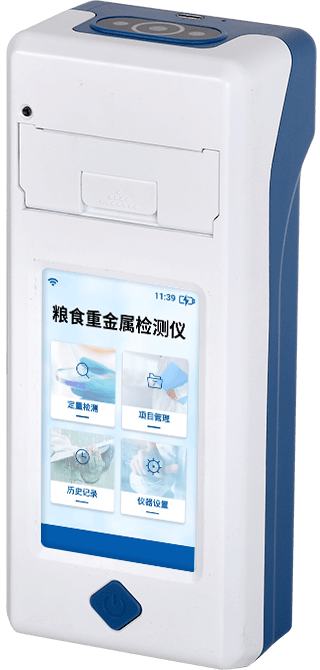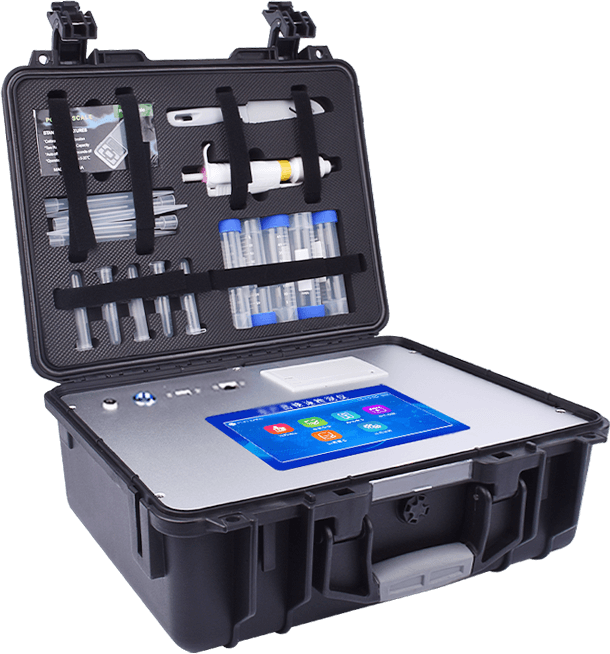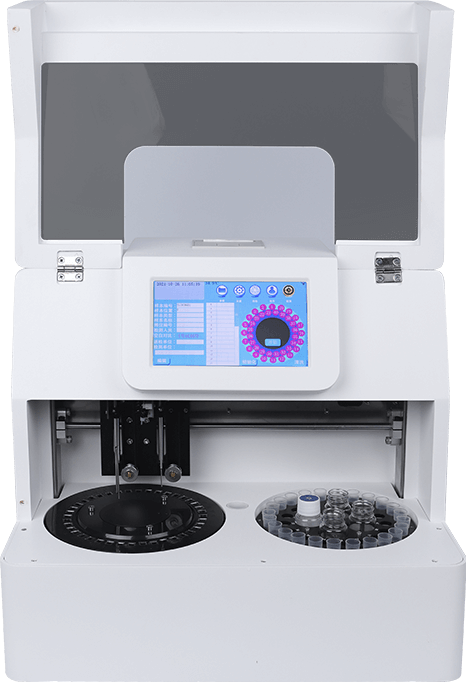
Grain pesticide residue detector
- Product Number:LD-NC08
- Product Difference:8 detection channels, simultaneously testing multiple samples, intelligent operating system, automatically determining whether the samples are qualified
Product Introduction
Testing standards: Designed according to the requirements of standard methods (GB/T5009.199-2003) and residual pesticide testing standards. The enzyme inhibition rate colorimetric method is used to quickly and accurately detect the content of organic phosphorus and carbamate pesticides in agricultural and forestry products such as fruits and vegetables.
The grain pesticide residue detector is widely used for rapid detection of organophosphate and carbamate pesticide residues in foods such as vegetables, fruits, tea, grains, and agricultural and sideline products. In addition, it can also be used for on-site detection in fruit and vegetable tea production bases and agricultural wholesale sales markets, as well as for safety testing in restaurants, schools, canteens, and households before fruit and vegetable processing.
The grain pesticide residue detector can be equipped with voice reading function, providing humanized guidance for operation, realizing self heating function, and can be configured with large capacity lithium batteries.
Product Features
Display mode: 7-inch high-sensitivity true-color touchscreen display with a user-friendly Chinese interface, providing intuitive and simple readings.
Both acetylcholinesterase and butyrylcholinesterase reagents can be used, meeting national standards and Ministry of Agriculture standards.
Android smart operating system with a more user-friendly interface. The main controller uses a multi-core processor with a clock speed of 1.88 GHz, ensuring faster operation and greater stability.
Features a menu library with over 100 vegetable names, categorized for management, and allows for the addition or removal of vegetable names as needed, as well as editing of vegetable names, with the ability to directly print vegetable names.
Testing channels: 8 testing channels, capable of simultaneously testing multiple samples, with cyclic testing, allowing for immediate testing upon placement. Each sample is controlled by the program to operate independently, preventing mutual interference.
Features a USB 2.0 interface design for convenient data storage and transfer, and can be directly connected to a computer at any time, with computer control of the instrument. Enables data querying, browsing, analysis, statistics, and printing.
Next-generation high-speed printer capable of simultaneously printing QR codes, with print formats including tester name, absorbance difference, testing time, testing institution, sample name, and result determination.
The light source uses imported ultra-high-brightness LEDs, offering advantages such as low power consumption, high precision, strong stability, controllable light sources (unused light sources can be turned off), and fast response speed.
Highly intelligent, the instrument features self-testing functions: it has power-on self-testing and zeroing functions, as well as automatic detection of repeatability.
The instrument supports 4G wireless data transmission, Wi-Fi network uploading, and Ethernet connection, enabling rapid data uploading for management and statistical analysis.
The instrument has self-protection features, including the ability to set usernames and passwords to prevent unauthorized access.
It features intelligent constant current voltage regulation, automatic light intensity calibration, and no temperature drift in the light source during prolonged continuous operation.
Automatically determines whether the sample is qualified, providing more intuitive test results.
Uses DC 12V power supply for enhanced safety, and is equipped with a 6A lithium-ion battery charger.
The instrument includes functions for recalibration, locking, and restoring factory settings.
Product parameters
| Wavelength Configuration | 410nm |
| Suppression Rate | Display Range 0%–100%, Measurement Range 0%–100%, Indicated Value Error ≤10%, Repeatability ≤5% |
| Transmittance | Accuracy ±1.5%, Repeatability ≤0.5% |
| Drift | ≤0.005 Abs/3 min |

 +86 19353291814
+86 19353291814
 +86 19353291814
+86 19353291814



